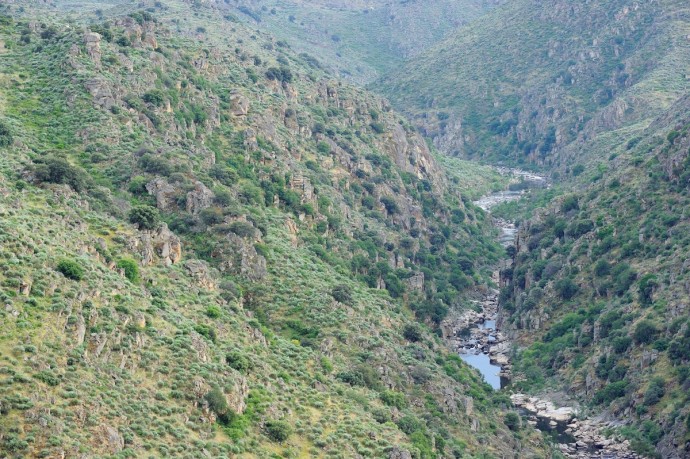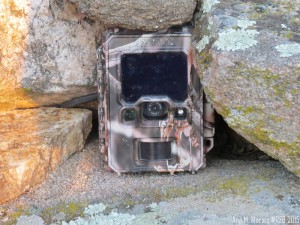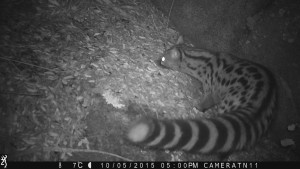The dramatic landscape of Western Iberia in Portugal where the Côa river is carving its deep path through the mountains is home to a vast variety of wildlife. Animal species of all sizes, shapes and colors inhabit land, skies and waters of the Côa Valley, however a great number of them are hard to spot. Anyone can see large herbivores from afar, but many other species are only visible through lenses of wildlife cameras – the invisible eyes in the wild.

Dawn is rising in the Côa Valley, grazers roaming through Faia Brava reserve are slowly appearing in the far horizon of Western Iberia, observed from the heights by great gliding birds. Black and griffon vultures, masters of their own time, circle above the alerted Sayaguesa and Maronesa cattle. Herds of wild-living Retuerta and Garrano horses restlessly running through the fields attract our eyes and attention to this magnificent scenery. During daylight, all eyes are on them, the big and noticeable animals, but there are some that go unnoticed by humans and as soon as the sun starts to set this scenery changes.

The creatures that dominate during the twilight and night of the Côa Valley are stealthy and agile, wary or even skittish, but they are no less admirable than their daytime peers. Special techniques are required to notice these animals during the night, but the effort is more than worthwhile. Huge varieties of nocturnal species are photographed thanks to the use of wildlife camera, photographic cameras equipped with infrared motion sensors that take a picture whenever they sense movement in the landscape surrounding it. They enable us to see and study animals and events that otherwise go unseen and with the help of these little machines, a new Western Iberia reveals itself.
From the crafty red fox that comes out of its lair in search of a less fortunate wood mouse to the rarely captured otter that steals the show every time it decides to pass in front of one of the cameras. The badger that stops its tunnel engineering for some hours in order to get some food at the surface is also unhidden. Wildlife cameras expose a new world full of action, undiscovered without the photographs taken during the silent night hours. The stone marten is one of the animals that would be very difficult to see without the use of motion sensor cameras. Conspicuous and attentive, this species escapes direct human observation with ease, but thanks to this technology, it is sporadically spotted feeding in front of the cameras.

The camera traps don’t capture only nocturnal animals, they are essential to see stealthy or shy animals that feed and travel during the day. The placement of cameras near the temporary ponds, full of small invertebrates and aquatic reptiles, was of crucial importance for the observation of the black stork, a species that wasn’t seen in Faia Brava since 2011. During the summer of 2015, wildlife cameras captured it in two different occasions waiting for the right moment to get a picture that no human would had the possibility to take. Another important photographic shot, taken in March 2015, was the visual confirmation of roe deer presence in the reserve grounds. Five years after the first image of this species, we got new photos and evidence of a roe deer wandering through the Faia Brava reserve. There are much more species captured through wildlife camera trapping methods; Common genet, wild boar, weasel and Egyptian mongoose are just some other animals that are seen and studied by using this hidden photographic registration.

In Western Iberia wildlife cameras are used to estimate the numbers, monitor and register the distribution and observe activity hours of each species. This less visible side of wildlife presence would be much harder to study and research and almost impossible to spot without the help of these “eyes in the wild”. They are an essential tool to monitor and obtain critical data about wildlife and their habitats and needed in the daily work.
If you would like to support the rewilding of this undercover wildlife join the rewilding movement through the “Cameras: Eyes in the wild” donation campaign. By getting on board, you will be directly supporting rewilding actions and purchase of more wildlife cameras needed in Western Iberia and other rewilding areas.
